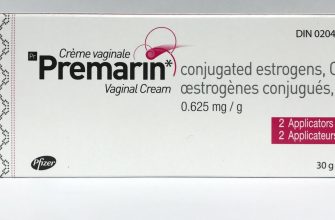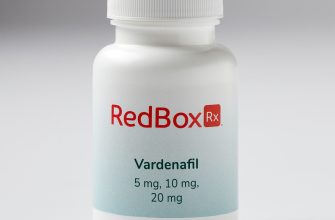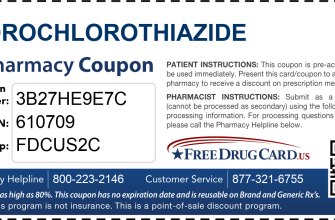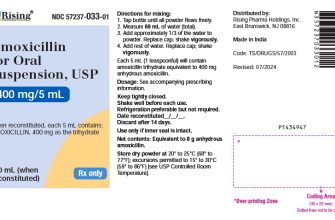Need clear information on Griseofulvin 125 mg/5 ml suspension? This guide provides concise details for safe and effective use. We’ll cover key aspects, helping you understand this medication properly.
Dosage is crucial: Always follow your doctor’s prescription exactly. Typical doses vary depending on the patient’s weight and the specific fungal infection. Incorrect dosing can hinder treatment. The suspension’s convenient 125 mg/5 ml concentration simplifies accurate measurement. Use a calibrated measuring device – don’t guess!
Storage is equally important. Keep the suspension refrigerated, as directed on the label. Discard any unused portion after the expiration date. This ensures the medication maintains its potency and safety. Proper storage prevents degradation.
Potential side effects include gastrointestinal upset, headache, and allergic reactions. Consult your physician if you experience any unusual symptoms. Early detection and reporting can help manage any complications promptly. Always inform your doctor about all medications you are taking.
Remember: This information serves as a guide. Always consult your healthcare provider for personalized advice and treatment. They can answer specific questions and address your individual concerns regarding Griseofulvin 125 mg/5 ml suspension use.
- What is Griseofulvin?
- Indications for Use: Which Fungal Infections Does it Treat?
- Dosage and Administration: How to Take Griseofulvin Suspension
- Potential Side Effects: What to Watch Out For
- Drug Interactions: Medications to Avoid While Using Griseofulvin
- Precautions and Warnings: Who Should Not Take Griseofulvin?
- Storage and Handling: How to Properly Store the Suspension
- Protecting the Medicine
- Handling Precautions
- Missed Dose: What to Do if You Miss a Dose
- Contact Your Doctor or Pharmacist
- Keeping Track of Your Medication
- Storage and Disposal
- Overdose: Symptoms and Treatment
What is Griseofulvin?
Griseofulvin is an antifungal medication. It works by interfering with the growth of fungi that cause certain infections. The drug specifically targets dermatophytes, a type of fungus responsible for skin, hair, and nail infections like ringworm and athlete’s foot.
Doctors prescribe griseofulvin to treat various fungal infections. These include tinea corporis (ringworm of the body), tinea cruris (jock itch), tinea pedis (athlete’s foot), tinea capitis (ringworm of the scalp), and onychomycosis (fungal nail infections). The effectiveness depends on the specific infection and the individual’s response to treatment. Always follow your doctor’s instructions precisely.
Griseofulvin comes in different forms, including tablets and suspensions like the 125 mg/5 ml suspension you mentioned. The dosage and duration of treatment vary depending on the type and severity of the infection. Your doctor will determine the appropriate course of treatment for you. This medication usually requires consistent use for several weeks or even months to effectively eliminate the infection. Side effects are possible, although not everyone experiences them. Common side effects might include headache, upset stomach, and diarrhea. Consult your physician if you experience any unusual side effects.
Remember, griseofulvin only treats fungal infections. It won’t work against bacterial or viral infections. If you suspect a fungal infection, consult a healthcare professional for proper diagnosis and treatment. Self-treating can be harmful. Accurate diagnosis ensures the correct medication and treatment plan.
Indications for Use: Which Fungal Infections Does it Treat?
Griseofulvin oral suspension treats several types of fungal infections. It’s particularly effective against dermatophytes, fungi that cause skin, hair, and nail infections.
- Ringworm: Griseofulvin effectively combats ringworm infections affecting the body (tinea corporis), feet (tinea pedis – athlete’s foot), groin (tinea cruris – jock itch), scalp (tinea capitis), and nails (tinea unguium).
- Favus: This severe scalp infection also responds well to griseofulvin treatment.
- Other dermatophytoses: The medication effectively targets a range of dermatophyte-caused infections.
Remember, griseofulvin is a prescription medication. Always follow your doctor’s instructions regarding dosage and duration of treatment. Improper use can lead to treatment failure or other complications. Consult your physician if you experience any side effects or if your symptoms don’t improve.
This information is for general knowledge and does not replace professional medical advice. Always consult a healthcare provider for diagnosis and treatment of fungal infections.
Dosage and Administration: How to Take Griseofulvin Suspension
Always follow your doctor’s instructions precisely. The recommended dose varies depending on your age, weight, and the specific infection being treated. Your doctor will determine the correct dose for you.
For a 125 mg/5 ml suspension, typical dosages might include:
- Children: The dose is usually calculated based on body weight. Your doctor will provide specific instructions.
- Adults: A common adult dose is 500 mg to 1000 mg daily, divided into one to four doses.
Here’s how to take the suspension:
- Shake the bottle well before each use to ensure the medication is evenly mixed.
- Use the measuring device provided with the medication, or a calibrated spoon, to measure the correct dose. Do not use a regular kitchen spoon as this can lead to inaccurate dosing.
- Take the medication with food, preferably a high-fat meal. This helps your body absorb the griseofulvin more effectively.
- Swallow the suspension whole; do not chew or hold it in your mouth.
- Continue taking the medication for the full course of treatment, even if your symptoms improve before you finish the prescription. Stopping early may allow the infection to return.
If you miss a dose, take it as soon as you remember unless it’s almost time for your next dose. Never take a double dose to make up for a missed one.
Store the suspension at room temperature, away from direct sunlight and moisture. Keep out of reach of children.
Contact your doctor or pharmacist immediately if you experience any unexpected side effects or have questions regarding your treatment.
Potential Side Effects: What to Watch Out For
Griseofulvin can cause several side effects, though not everyone experiences them. Common side effects include headache, nausea, and upset stomach. These are usually mild and often disappear as your body adjusts to the medication.
Less common, but still possible, side effects include dizziness, fatigue, and skin rashes. If you develop a rash, stop taking the medication and contact your doctor immediately.
Serious side effects are rare but require immediate medical attention. These can include jaundice (yellowing of the skin or eyes), severe allergic reactions (difficulty breathing, swelling of the face, lips, or tongue), and unusual bleeding or bruising.
Monitor yourself for changes in vision, such as blurred vision or double vision. Report any visual changes to your doctor promptly.
While generally safe, griseofulvin can interact with other medications. Inform your doctor about all medications, including over-the-counter drugs and herbal supplements, you are taking before starting griseofulvin. This helps prevent potential drug interactions.
Remember to carefully read the medication guide provided by your pharmacist. If you have any concerns or questions regarding potential side effects, contact your doctor or pharmacist for clarification. They can provide personalized advice based on your individual health history.
Drug Interactions: Medications to Avoid While Using Griseofulvin
Avoid using Griseofulvin concurrently with oral anticoagulants like warfarin. Griseofulvin can intensify the effects of warfarin, increasing bleeding risk. Monitor your INR closely if you must use both medications. Consult your doctor for alternative anticoagulation strategies.
Barbiturates, such as phenobarbital, can accelerate Griseofulvin’s metabolism, reducing its effectiveness. Your doctor may need to adjust your Griseofulvin dosage if you take barbiturates.
Griseofulvin can interact with certain antifungals, potentially leading to decreased efficacy of either drug. Discuss other antifungal options with your healthcare provider before combining them with Griseofulvin.
Always inform your doctor and pharmacist about all medications, including over-the-counter drugs and herbal supplements, you are taking before starting Griseofulvin. This includes prescription drugs, vitamins, and herbal remedies. This proactive approach helps prevent potential interactions and ensures your safety.
Remember: This information is not exhaustive. This list focuses on major interactions. Your doctor has the most complete understanding of your health and can provide tailored advice.
Precautions and Warnings: Who Should Not Take Griseofulvin?
Avoid griseofulvin if you have porphyria. This medication can worsen this condition.
Patients with liver disease should exercise caution. Griseofulvin is metabolized by the liver; impaired liver function may necessitate dose adjustment or alternative treatment. Consult your doctor.
Individuals with systemic lupus erythematosus (SLE) should discuss griseofulvin use with their physician. The medication may exacerbate this autoimmune disease.
Pregnancy and breastfeeding require special attention. Griseofulvin can cross the placenta and enter breast milk. Discuss the risks and benefits with your healthcare provider before using this medication during pregnancy or while breastfeeding.
Always inform your doctor about all medications you are currently taking, including over-the-counter drugs and herbal supplements. Griseofulvin can interact with other drugs, potentially affecting their efficacy or causing adverse reactions. This includes anticoagulants, oral contraceptives, and certain anticonvulsants.
Allergic reactions are possible. Stop taking griseofulvin and seek immediate medical attention if you experience symptoms such as rash, hives, swelling, or difficulty breathing.
Storage and Handling: How to Properly Store the Suspension
Keep Griseofulvin 125 mg/5 ml suspension in a cool, dry place. Store it at room temperature, between 68°F and 77°F (20°C and 25°C).
Protecting the Medicine
Protect the suspension from light. Store it in its original container. This prevents degradation and maintains its potency. Discard any unused portion after 14 days of opening.
Handling Precautions
Always wash your hands before and after handling the medication. Ensure the bottle is tightly closed after each use. Never freeze the suspension. Freezing damages the medicine and can make it ineffective.
Missed Dose: What to Do if You Miss a Dose
Take the missed dose as soon as you remember, unless it’s almost time for your next dose. If it’s almost time for your next dose, skip the missed dose and continue with your regular schedule. Never take two doses at once to make up for a missed dose.
Contact Your Doctor or Pharmacist
If you frequently miss doses, contact your doctor or pharmacist. They can help you create a medication schedule that works better for you or discuss alternative options.
Keeping Track of Your Medication
Using a pill organizer or setting reminders on your phone can help you remember to take your medication on time. Consistent dosing is key for effective treatment.
| Scenario | Action |
|---|---|
| Remembered soon after missing a dose | Take the missed dose immediately. |
| Almost time for the next dose | Skip the missed dose and take the next dose as scheduled. |
| Multiple missed doses | Contact your doctor or pharmacist. |
Storage and Disposal
Store the suspension as directed on the label, typically at room temperature. Dispose of any unused medication properly following your pharmacist’s or doctor’s instructions.
Overdose: Symptoms and Treatment
If you suspect a griseofulvin overdose, contact a poison control center or emergency services immediately. Don’t delay.
Symptoms may include:
- Headache
- Dizziness
- Nausea and vomiting
- Abdominal pain
- Confusion
- Hallucinations (rare)
- Seizures (rare)
Treatment focuses on supportive care. This includes:
- Monitoring vital signs closely.
- Managing symptoms as they arise.
- Providing intravenous fluids if dehydration occurs.
- Administering activated charcoal to help absorb the medication (if appropriate based on the time elapsed since ingestion).
- Treating seizures if they develop with anticonvulsants.
Specific treatment depends on the severity of the overdose and the individual’s health status. Medical professionals will determine the best course of action.
Note: This information is for guidance only and does not replace professional medical advice. Always seek immediate medical attention in case of suspected overdose.









